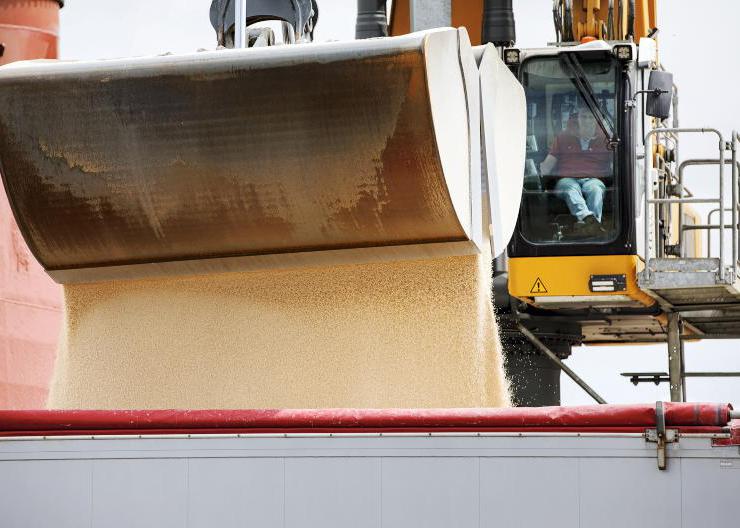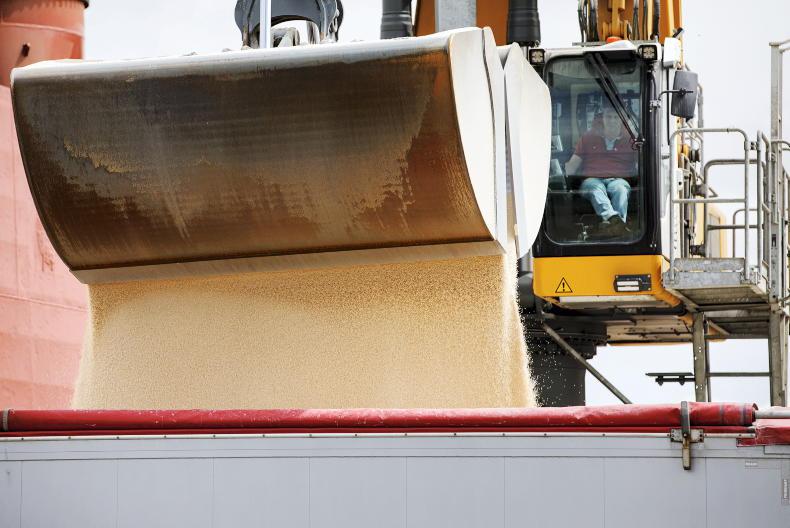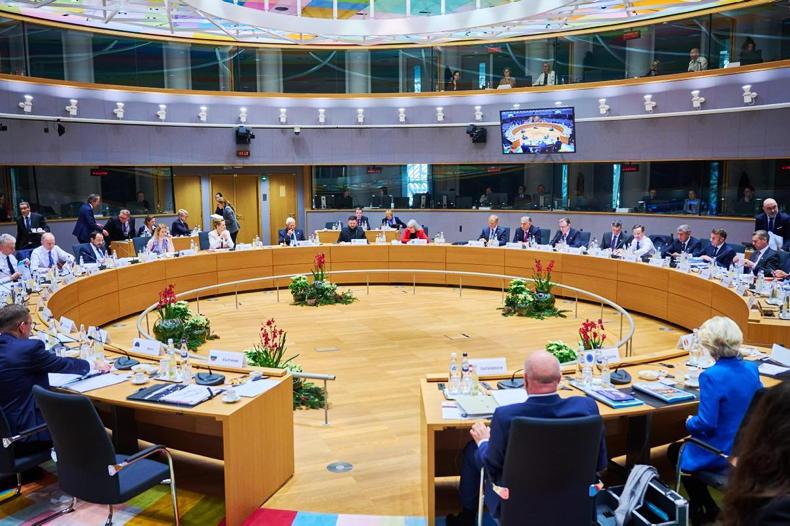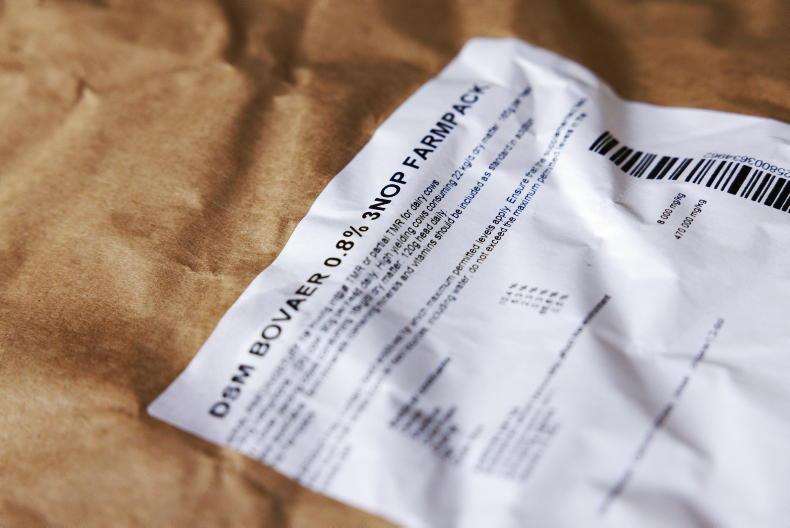The Danish government has announced that it will introduce a carbon tax on agriculture, coming into effect in 2030.
This has been agreed between the government and a range of industry stakeholders, including the Danish Agriculture and Food Council, the Danish Society for Nature Conservation, the Confederation of Danish Industry, the NNF (the union that represents meat factory workers) and the Danish Local Government Association.
Danish farmers and the wider food industry are part of the Danish Agriculture and Food Council. However, the agreement remains to be approved by the Danish parliament, but it is expected that members will ratify the agreement.
The tax will be the equivalent of €40/t of CO2e in 2030 and this will increase to the equivalent of €100/t by 2035. Farmers will be able to avail of a 60% tax break on this, reducing the payable tax to the equivalent of €16/t from 2030 and €40/t from 2035.
Fund
A fund the equivalent of almost €5.5bn is to be created for a green landscape fund, which will contribute to the plantation of 250,000 hectares of forests and restoration of 140,00ha of peatlands and purchase of lands to remove them from having nitrogen applied.
A carrot and stick approach will be adopted on farmers with peatlands, with a tax equivalent to €5.50/t being applied from 2028 for farmers not taking part in peatland restoration.
Agriculture’s share of Danish emissions has been growing, as other sectors have reduced theirs. Currently, they account for one quarter of total Danish emissions, which is almost 10% higher than a decade ago and, at current rates, they are on course to account for half of all Danish GHG emissions by 2030.
Danish agriculture
Farming in Denmark has many similarities with Ireland. It has a population of 5.8m people, but according to the Danish Agriculture and Food Council 2023 report, they produce enough food to feed 15m, with the agri-food sector accounting for 22% of Denmark’s total exports of goods.
Average farm size is 83ha, with 20% of farms over 100ha and approximately 12% of the land is farmed organically. The two largest categories of Danish agriculture are pigmeat and dairy production.
Assuming the Danish parliament ratifies this agreement, Denmark will be the first country in the world to impose an emissions tax on farming.
New Zealand had also been scheduled to introduce a similar tax, but a change of government there meant that the plan was abandoned.
Denmark is one of the most efficient producers of agri food in the world and is a recognised leader in its dairy and pigmeat production efficiency.
As a country, it is quite similar to Ireland and a recognised global player, particularly in dairy, pork and agricultural machinery exports. It also has a thriving pharma sector, again something in common with Ireland.
As is the case with Ireland, Danish government policy is determined to drive a serious reduction in emissions for agriculture - the difference is that it has outlined a clear road map on how it is going to deliver this by way of a carbon tax.
In Ireland, while alternative land uses are encouraged, the nitrates directive will lead to a reduction in cattle and emissions in turn.
The final factor that Ireland and Denmark have in common is whatever production is lost because of government policy will be delivered from elsewhere in the world, along with a higher level of emissions per kilo of output.
A perfect example of how the law of unintended consequences works with reducing emissions from agriculture on a national basis.
Read more
Denmark to tax farmers for livestock emissions
Why Denmark won’t be renewing its nitrates derogation
How does the Danish breeding system work?
The Danish government has announced that it will introduce a carbon tax on agriculture, coming into effect in 2030.
This has been agreed between the government and a range of industry stakeholders, including the Danish Agriculture and Food Council, the Danish Society for Nature Conservation, the Confederation of Danish Industry, the NNF (the union that represents meat factory workers) and the Danish Local Government Association.
Danish farmers and the wider food industry are part of the Danish Agriculture and Food Council. However, the agreement remains to be approved by the Danish parliament, but it is expected that members will ratify the agreement.
The tax will be the equivalent of €40/t of CO2e in 2030 and this will increase to the equivalent of €100/t by 2035. Farmers will be able to avail of a 60% tax break on this, reducing the payable tax to the equivalent of €16/t from 2030 and €40/t from 2035.
Fund
A fund the equivalent of almost €5.5bn is to be created for a green landscape fund, which will contribute to the plantation of 250,000 hectares of forests and restoration of 140,00ha of peatlands and purchase of lands to remove them from having nitrogen applied.
A carrot and stick approach will be adopted on farmers with peatlands, with a tax equivalent to €5.50/t being applied from 2028 for farmers not taking part in peatland restoration.
Agriculture’s share of Danish emissions has been growing, as other sectors have reduced theirs. Currently, they account for one quarter of total Danish emissions, which is almost 10% higher than a decade ago and, at current rates, they are on course to account for half of all Danish GHG emissions by 2030.
Danish agriculture
Farming in Denmark has many similarities with Ireland. It has a population of 5.8m people, but according to the Danish Agriculture and Food Council 2023 report, they produce enough food to feed 15m, with the agri-food sector accounting for 22% of Denmark’s total exports of goods.
Average farm size is 83ha, with 20% of farms over 100ha and approximately 12% of the land is farmed organically. The two largest categories of Danish agriculture are pigmeat and dairy production.
Assuming the Danish parliament ratifies this agreement, Denmark will be the first country in the world to impose an emissions tax on farming.
New Zealand had also been scheduled to introduce a similar tax, but a change of government there meant that the plan was abandoned.
Denmark is one of the most efficient producers of agri food in the world and is a recognised leader in its dairy and pigmeat production efficiency.
As a country, it is quite similar to Ireland and a recognised global player, particularly in dairy, pork and agricultural machinery exports. It also has a thriving pharma sector, again something in common with Ireland.
As is the case with Ireland, Danish government policy is determined to drive a serious reduction in emissions for agriculture - the difference is that it has outlined a clear road map on how it is going to deliver this by way of a carbon tax.
In Ireland, while alternative land uses are encouraged, the nitrates directive will lead to a reduction in cattle and emissions in turn.
The final factor that Ireland and Denmark have in common is whatever production is lost because of government policy will be delivered from elsewhere in the world, along with a higher level of emissions per kilo of output.
A perfect example of how the law of unintended consequences works with reducing emissions from agriculture on a national basis.
Read more
Denmark to tax farmers for livestock emissions
Why Denmark won’t be renewing its nitrates derogation
How does the Danish breeding system work?










SHARING OPTIONS